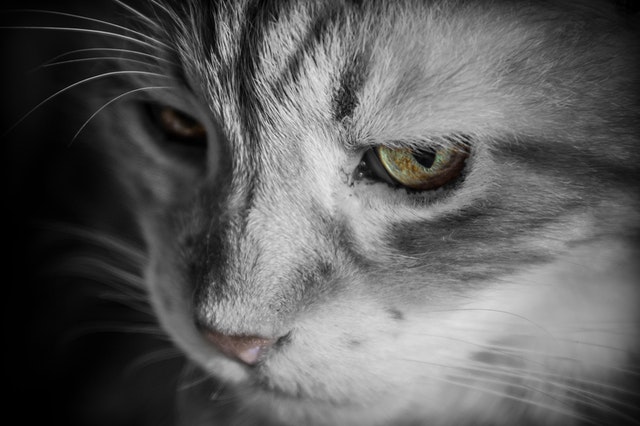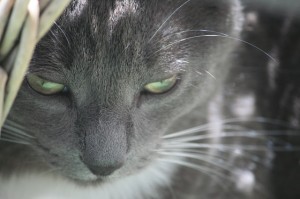Cats and Cataracts

Have you noticed a change in the color of your cat’s eyes? Does her vision seem impaired? If so, cataracts may be the cause. Although sometimes considered a problem that affects only seniors, age often isn’t the main factor.
Others include inflammation from an injury or eye infection, diabetes mellitus (this, however, would be accompanied by increased thirst, frequent urination and weight loss), hypocalcemia (unusually low calcium in the bloodstream), and heredity, which predisposes some breeds — Persians, Birmans, Himalayans and Domestic Shorthairs among them – to getting cataracts.
What, then, is a cataract? It’s a medical condition in which the lens of one or both eyes becomes progressively opaque, thereby preventing light from passing through to the retina. It results in blurred vision, and in many cases, complete loss of sight.
If you suspect that your kitty may be developing cataracts, check for the following:
A blue, gray or white layer in one or both eyes
Changes in eye color or the size and shape of pupils
Watery eyes
Clumsiness or unusual walking habits
Sudden reluctance to jump on furniture or climb stairs
Squinting
Trouble recognizing familiar people
Difficulty judging distance
Impaired ability to see in the dark or dimly lit areas
Any or several of these symptoms merit an immediate visit to your vet. If cataracts are confirmed, the treatment depends on the cause. Often the goal isn’t to restore any lost sight, but to prevent any secondary problems such as uveitis, glaucoma and retinal detachment. And while the only way to remove cataracts completely is through surgery, some other options can keep them from worsening.
Your vet may prescribe eye drops for your kitty to prevent further inflammation and the above-mentioned complications. If the cataracts are the result of a dietary deficiency, your vet may suggest what adjustments to make. Many pet parents, though, choose NOT to treat cataracts since most cats adjust well to impaired vision or blindness, relying on their other senses to “guide” them.
But should YOU opt for surgery, the procedures include phacoemulsification (a process where the eye lens is liquefied with ultrasonic waves and the fluids replaced with a balanced salt solution, it has a 90 percent success rate), extracapsular lens extraction and intracapsular lens extraction.
As with many conditions, however, prevention is sometimes the best medicine. Routine eye exams by your vet will often catch a problem before it gets worse. Staying up-to-date on vaccinations can help prevent viral infections that affect the lens of the eye. Maintaining kitty on a proper diet, avoiding exposure to toxic substances, and keeping her from fighting with other cats where eye injuries are paws-ible will also help.


